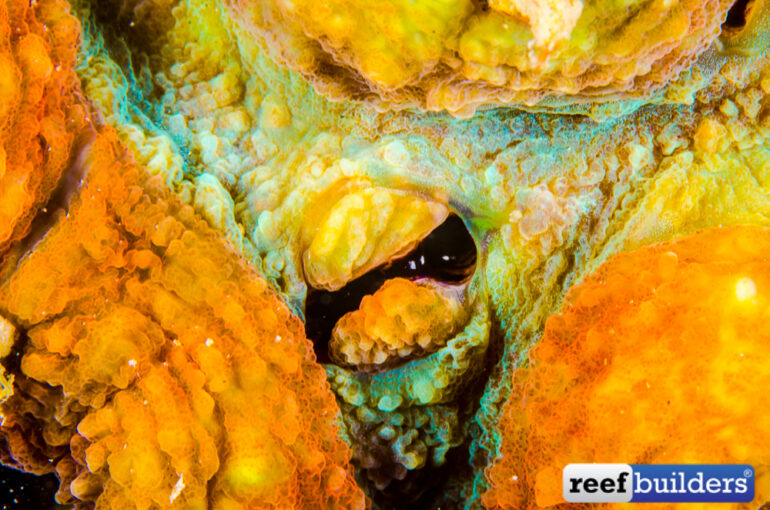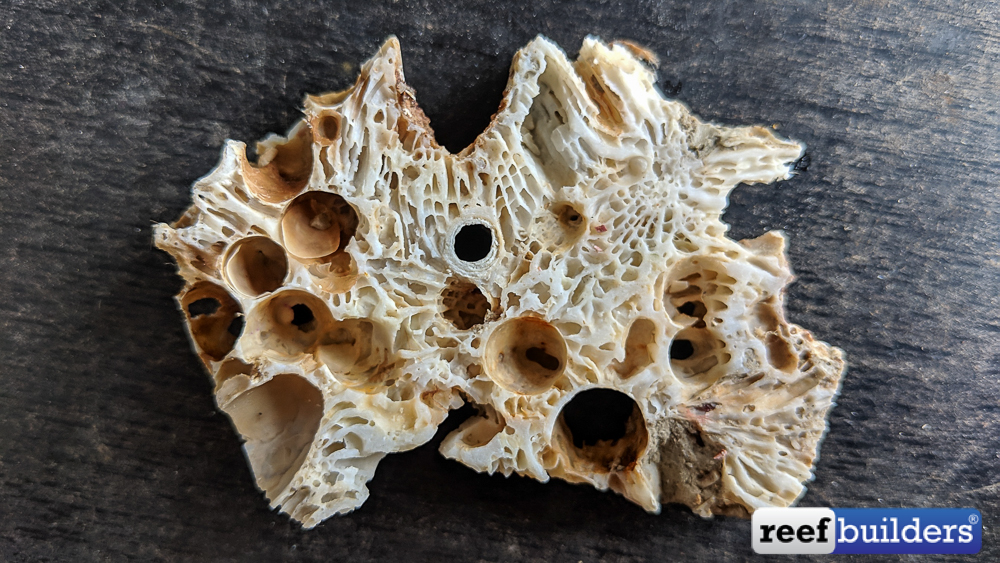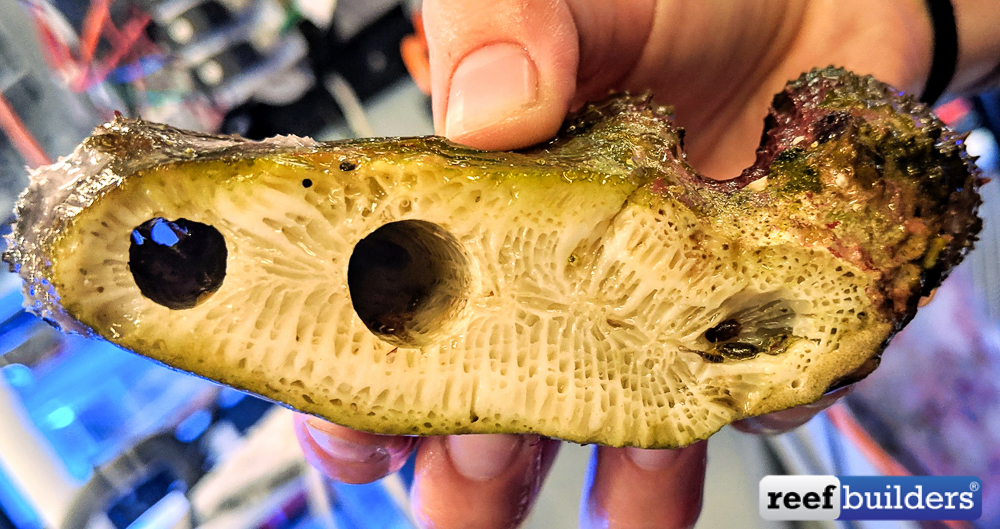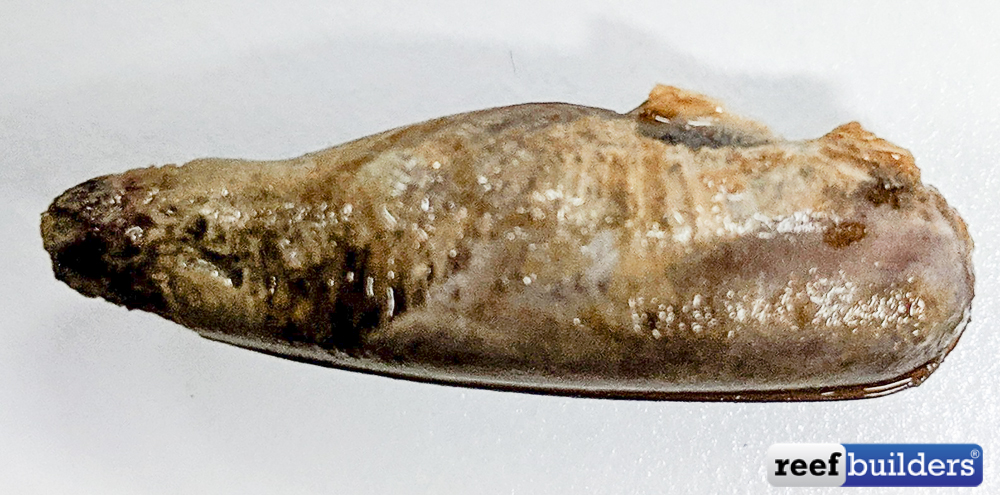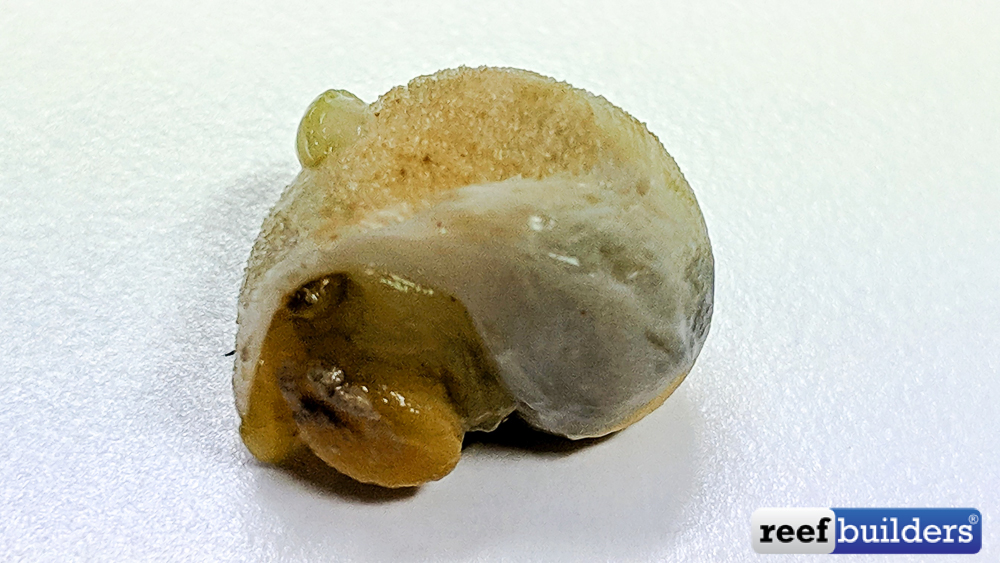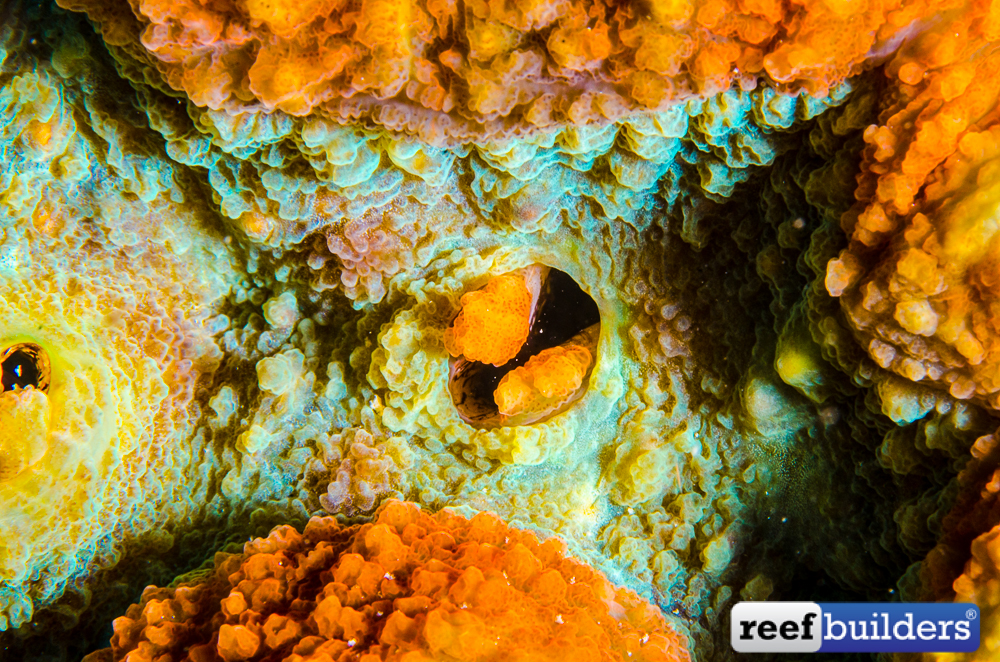During our stay with the UCA team, and the few diving we made with them, we noticed that many corals, and especially Lobophyllia were showing weird holes on their polyps. After investigation, we found out that they were infested with boring clams in their skeleton. Some even getting through the polyp tissue, and the coral being force to build a wall around them, leading to some deformities in the skeleton, and the tissues.
The boring mollusks are one of the main agents of bioerosion. Like members of the Tridacna family such as Tridacna crocea, they bore mechanically, chemically, or both of them together. It’s well known that corals are the building blocks of the reef, and that as they grow and calcify, reefs grow larger, stronger, and more complex.
But less recognition has been given to bio-eroders, the organisms that break down the reef. This balance of reef build up and break down determines whether the reef is in a state of net growth or net break down.
The veliger of boring mollusk settles on the surface of living or dead corals. After metamorphosis, the young clam bore into the colony lime skeleton. It forms then a pear like channel, with a narrow exit. Through it, the clam shows its siphons from where it inhales and exhales water that it filters.
Some of them, bore their hole in the central part of the corallite, close to the gastric cavity of the polyp. Thus the clam filters water enriched with zooxanthellae excreted by the coral. At the same time the result of the clam digestion can directly fertilize the coral zooxanthellae production, so it seems that this relation is beneficial for both.
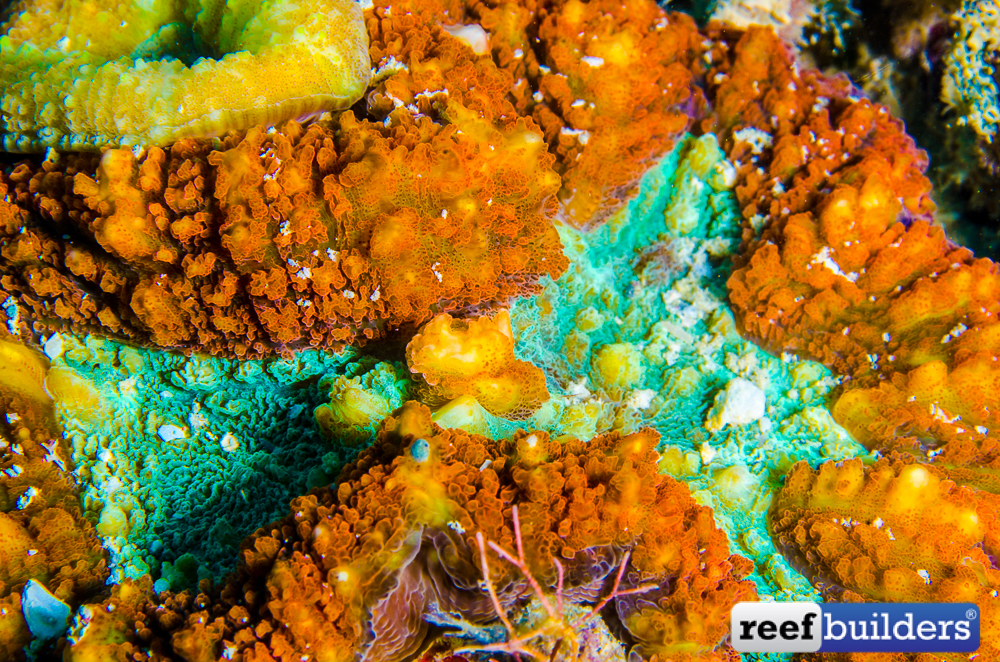
These mollusks are basically similar to mussels, but more elongated.
There seems to be a direct correlation between the abundance of these mollusks and the direct planktonic productivity of the reef waters, the more nutrients, the more borers. Leading to the conclusion that Australia inshore reefs are very dirty, and that the corals we get from these waters should be heavily fed.
It’s interesting to note that the more nutrients in the water, is not healthy at all for the reef ecosystem. Like if Sargassum and Crown of Thorn Starfish infestation on the reefs along the coast of Queensland weren’t obvious enough evidences that the heavy use of fertilizers in the sugar cane industry has a very high and direct impact on the reef health along the Great Barrier Reef. Corals have Starfish that feed on them, Algae that shade and irritate them, then also some clams that bore into them…. Maybe to protect the reef environment it’s time to start producing oyster and mussels along the coast!


